Cool Jazz and Monochromes: The Paintings of Jamie Te Heuheu
At the State Hermitage Museum, people are constantly taking selfies in front of Black Square (1915). Whether or not we consider it to be a ‘correct’ way to engage with an artwork, selfie-taking is increasingly common in art museums world-wide; it’s a contemporary cultural phenomenon, with audiences typically singling out a particular ‘iconic’ work to be seen alongside. Anyway, here it is the relatively small work by Malevich, the Black Square, a non-objective abstraction which opened the way for what we now know as monochrome painting—that attracts the throngs of selfietakers; believe it or not, much more than any other of the modern master works that hang in the Hermitage. ‘That’s a selfie I would like to be in,’ says Jamie Te Heuheu (Ngāti Tūwharetoa), a New Zealand artist who has held impressive exhibitions at some of the savviest galleries up and down the country recently.
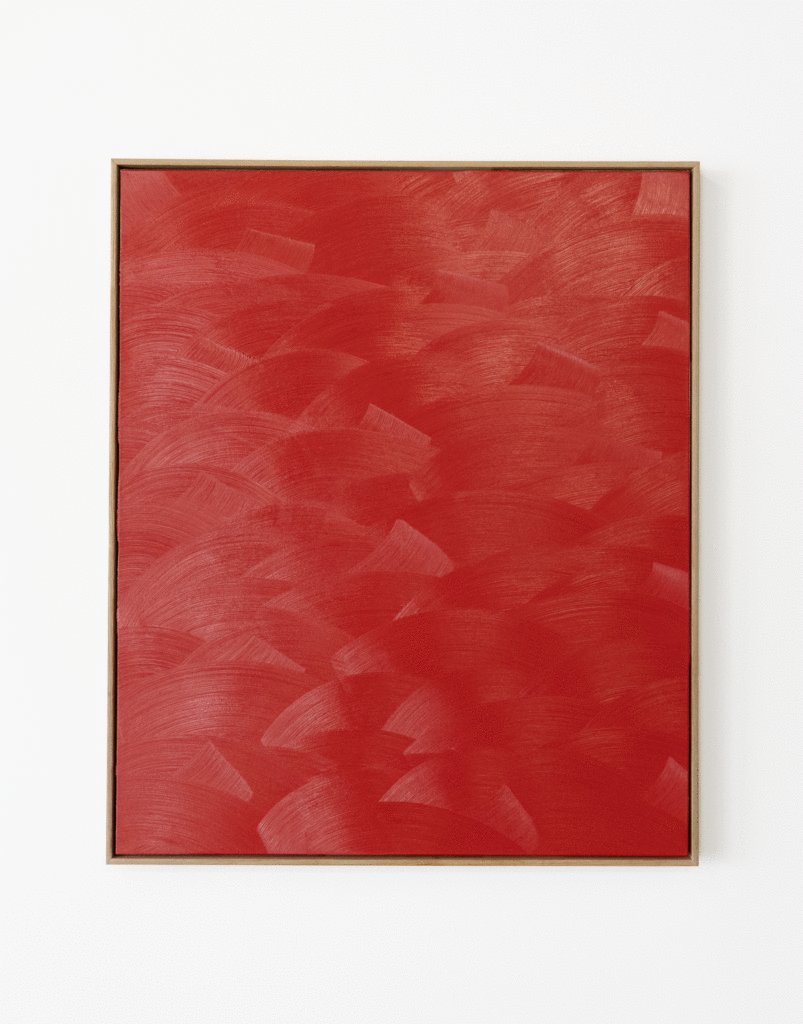
Te Heuheu’s debut show at the Starkwhite gallery in Auckland, consisting of monochrome paintings, was still running when I caught up with him in Christchurch last December. Each work involved a single unadulterated colour, articulated in broad and systematic strokes. Clearly, the artist is aware of the history of the monochrome and its repetitions in modern art. It is a long history, driven forward as it effectively was for some decades by aspirations to universalism and a strong belief in painting as a field in which advances could be made. Haven’t we seen exhibitions of monochromes before, over the years? Of course we have. So, what is it with ‘the monochrome’ these days? Why does it remain relevant, and how does an artist of a new generation such as Jamie Te Heuheu find in it a cogent means by which to address the present?
The appeal of the monochrome for an artist today is perhaps twofold. I would suggest that on the one hand, it stands as a model of self-determination anchored in the empirical space of the medium itself, a noble tradition in thought and practice, with a well-rehearsed language of description. On the other hand, it is quite the opposite: a structure of ambivalent suspension and ambiguity, hovering between stasis and change, significance and insignificance, advance and return; oscillating between the alternatives of identity and non-identity, aesthetic transcendence and cultural constraint. The first position links the contemporary artwork to the relative certitudes of art history; the second links it to the fugitivity of the present, a liminal and unstable situation underlying our current lived experience. It’s a dynamic balance of both that makes Te Heuheu’s work more than just replay abstraction as we know it.
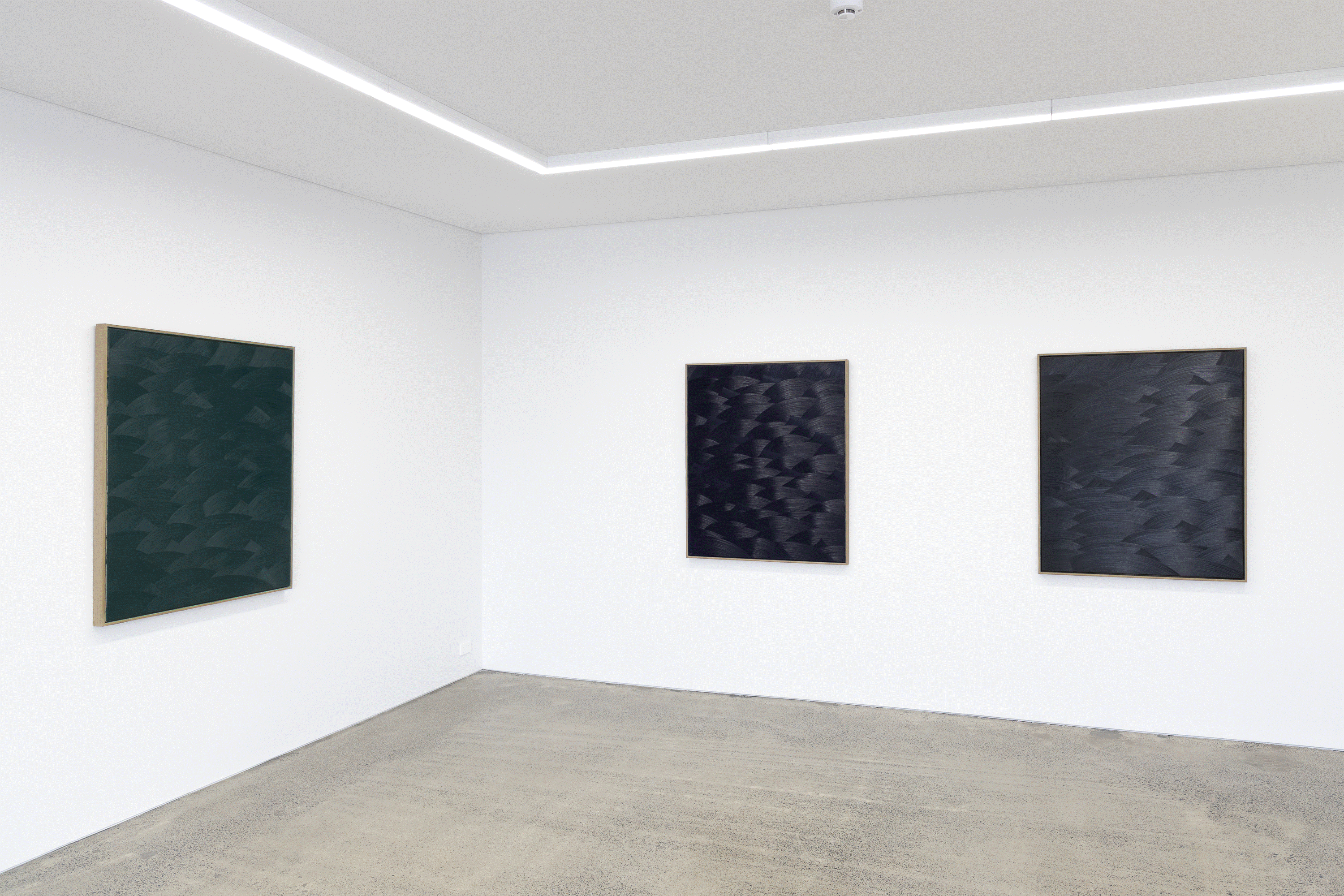
If there is repetition, it is repetition as repetition, not in the guise of parody. We can for example recognise the propositional framework of late modernist abstraction in Te Heuheu’s paintings, as the elemental repetition of an arc-like gesture, which is evidently a natural movement for the artist’s hand (and thus a kind of cipher for the artist himself, at the same time a gesture of ease and grace, and an action like waving, or weaving) is used to unify and simultaneously differentiate the plane of the canvas. This alliteration of a primordial mark results in what is to all intents and purposes painting-as-painting, grounded entirely in the terms of the medium and the process, requiring an essential respect for the activity of art itself. The artist’s ‘hand’ effectively becomes the primary content of the work as well as the source of its composition.
There is an emphatic materiality about this work, with no room for illusion. Then again, this manual dedication and saturation of the surface by oil paint, with its reflective qualities and impasto, in turn produces a shimmering, optically charged field on the surface plane which changes and oscillates as one moves around the painting. Exceptionally sensitive to the transient variability of the light, Te Heuheu’s paintings take on a variegated appearance, in a kind of counterpoint to the absence of chromatic variation—and this is what makes them engaging and remarkably seductive. The insistent rhythm begins to play with our perception, as the directional regularity of brush marks imparts rhythm and modulation to the surface, with visual shifts in value, texture and nuance. The impersonal yet fallible shimmer of the painted surface recalls other, analogous surface integrities, such as vinyl records, or CDs, or even the patterns of weaving, or waves on the endless ocean. The universalism of ‘painting as painting’ begins to dissolve and refract into other possible associations.
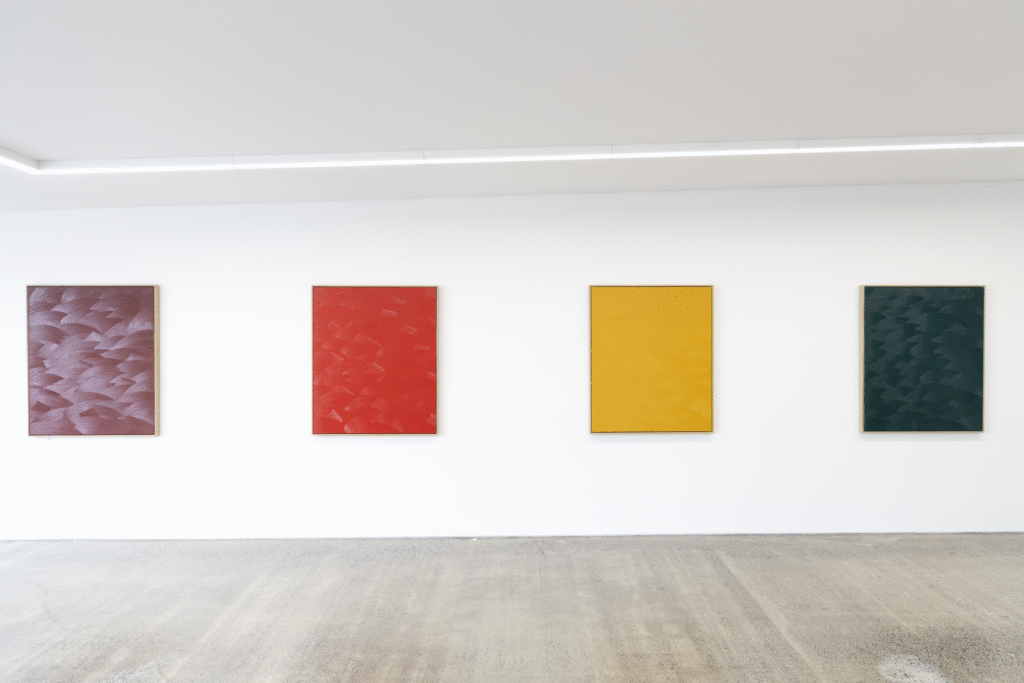
These are certainly strong and confident, complex works from a young artist whose trajectory is that of a rising star in the New Zealand art world. Graduating in Fine Arts at the University of Canterbury in 2020, Te Heuheu’s first break on the national scene came in 2021 with his inclusion in the group exhibition Four Early-Career Māori Artists: A New Net at Tim Melville Gallery, Auckland. In the following year, his work was showcased at the Aotearoa Art Fair in association with The Den, a Christchurch artist-run space of which he was a founding member. In the context of Four Early-Career Māori Artists, Te Heuheu’s highly abstract work was notable in that it made no obvious cultural references to his own heritage, in spite of the fact that his whakapapa Māori is a significant one. In fact, each one of the works was presented as ‘Untitled’ (as has long been de rigeur with non-representational art).
It is something of a contradiction faced by many artists: one wants for the work to be seen on its own terms; at the same time, one wants it to be relatable and not entirely opaque to viewers. What is not said may well be as important as what is said, but for this artist, it was a matter of deciding against a reliance on ‘Untitled’ as a title.
Somewhere between Four Early-Career Māori Artists and his solo exhibition at Hamish McKay Gallery, Wellington, in early 2023, Jamie Te Heuheu began giving his exhibitions and his paintings titles derived from jazz music. Days of Wine and Roses was the name of his Hamish McKay show; Quiet nights and Quiet Dreams at Starkwhite. The monochrome paintings in Days of Wine and Roses, also, hinted at a palette of colours associated with aspects of a Māori heritage. The jazz references are also personal, in as much as the artist does listen to a lot of music and has chosen the titles of jazz standards that he loves. The Cool Jazz theme is, above all, a key to the spirit in which Te Heuheu suggests we should look at his paintings. Forget the feelings of intimidation or bafflement that some might experience when faced with minimalist art, he seems to say: simply look at the paintings in the same way you might listen to music.
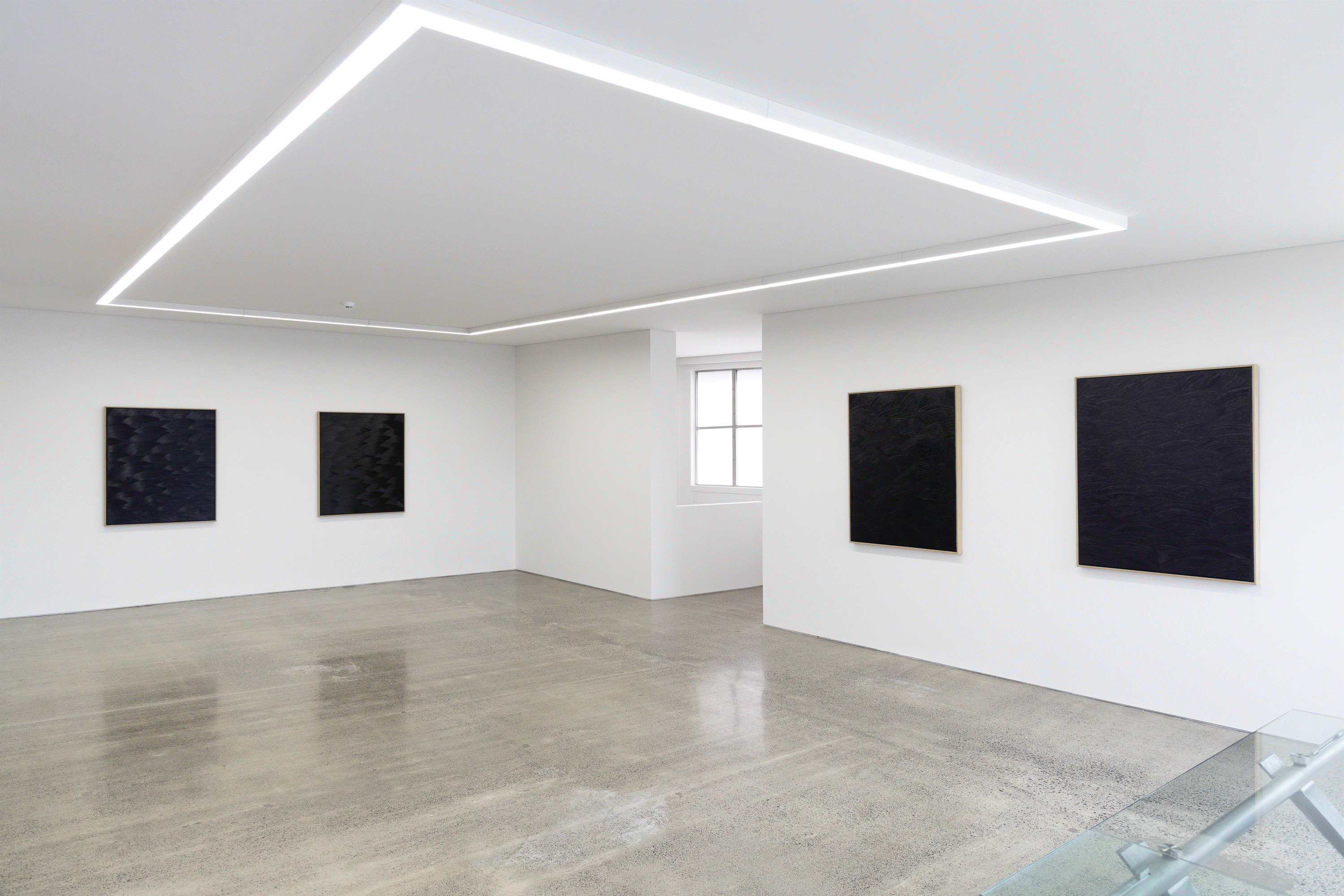
An analogy between music and painting is not a particularly novel idea, of course, but in this instance it resonates rather effectively on a popular culture level, given the ubiquity of music in recent times. Here, music is a metaphor for a desired immediacy and immersion in a viewing experience, and it is not Beethoven’s Fifth, but something much more approachable. If art is difficult, music is easy. It’s true that art may surround itself with too many layers of wordy discourse, the words in the end only rendering their subject more obscure. In actuality, people engage with art on a personal level, and find whatever ways they feel comfortable with to integrate what might otherwise be obscure into their experience of life.
The proximity of art to music indicates a trajectory and also a limit. While music draws us into a state of detachment, experienced as an essential atmosphere, art realises the paradox of immediacy. Rhythm cannot be objectified; it is experienced as indistinction, repetition, sensations belonging to no one; whereas an image may be captivating, but a painting can only be essentially musical insofar as it detaches itself from the object as sound does from that which makes the sound, and in fact it does not. It is material. It is the very presence of the medium. A painting may seem musical, but in the last analysis its temporality is carved out of this paradox of an immediacy which has to stop short of driving out all mediation, because to do so it would drive out itself. As such, the painting at the edge of being music is something infinitely fragile, and delicate, vulnerable to the stoppage of time, and in a sense without a present.
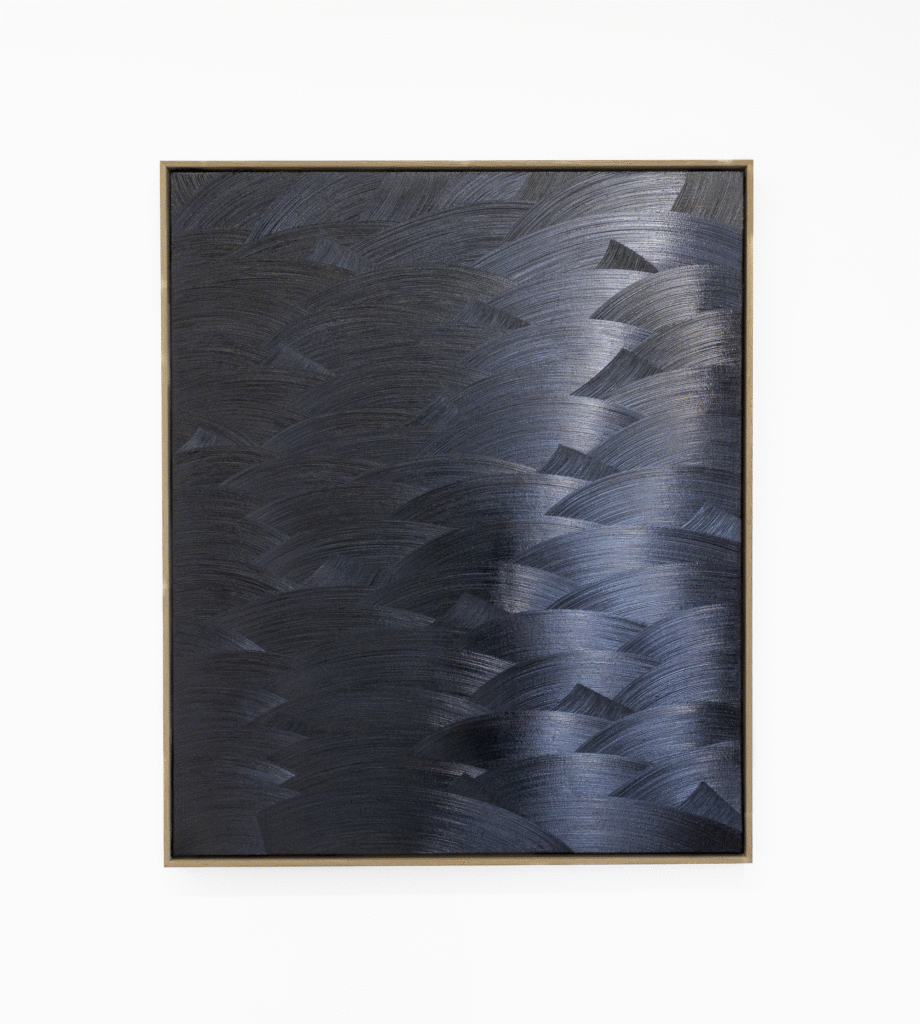
‘At art school, I was interested in Gerhard Richter, and Clyfford Still,’ the artist says, referring to two major international painters of different generations who are most widely known for bright and formally innovative abstract paintings. In obvious respects, his recent works might appear reductive and sober by comparison, but in saying that, such comparisons are unfair. Te Heuheu is, after all, still a young artist and only beginning to show us what he’s made of. Ultimately his luscious monochromes, with their sensitive and intensively worked surfaces, emphasize empirical seduction over theoretical justifications or pre-programmed developments.
We must wait with bated breath to see what he will do next.
Jamie Te Heuheu is an Ōtautahi Christchurch-based artist who works through monochrome colour field painting to explore the limits of the formal qualities of abstract artmaking, with an emphasis on process and brushwork. Te Heuheu graduated from the University of Canterbury School of Fine Arts with first class honours in 2020, since graduating Te Heuheu has exhibited throughout Aotearoa and co-founded The Den, an artist-run space in Christchurch.
Ben Curnow is an independent writer and curator who lives in Timaru. He has held curatorial positions in Australia and New Zealand and has published extensively on contemporary art and art history since 1990.